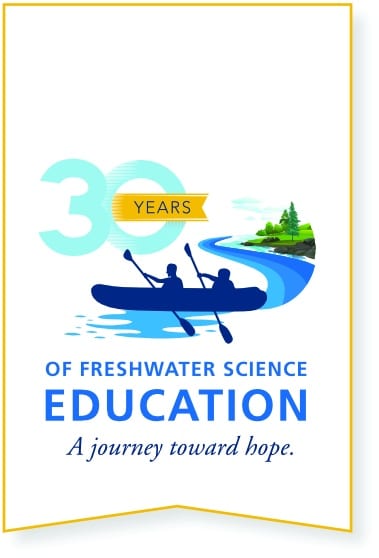
30 Years and Counting, the Stroud Center’s Education Department Makes Cutting-Edge Freshwater Science Fun
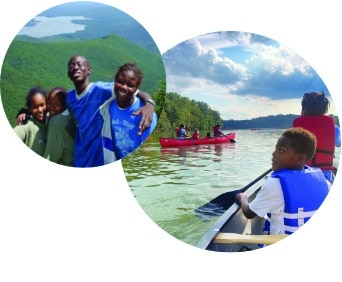
By Diane Huskinson and Steve Kerlin, Ph.D.
Bern Sweeney, Ph.D., still remembers the day more than 30 years ago when he put on a suit, packed up his slides and projector, and drove to Wilmington, Delaware, to convince Endsley Fairman of the Longwood Foundation to give him $50,000.
Sweeney, then director of Stroud Water Research Center, had read an article in the journal Science about students who were losing interest in science by the time they reached college and how this was shifting their career choices away from scientific disciplines. It was a worrying trend.
“Science had always been fun and interesting in grade school, but somehow we were losing students in middle school and high school. I realized we needed to intervene,” says Sweeney.
But the Stroud Center hadn’t done this before. In the first two decades after its founding in 1967, the primary focus of the small team of freshwater scientists was the pursuit of new knowledge about streams and rivers.
Groundbreaking discoveries were being made and shared mostly among the broader scientific community, post-secondary academia, and by the 1980s, with public and private partners to implement science-based solutions to environmental problems.
Necessity, it’s said, is the mother of invention, and as Sweeney explains, “I saw a need for outdoor environmental education programs targeting this age group, so I decided the Stroud Center was going to step up.”
Sweeney walked into Fairman’s office, pulled out his slide presentation, and began to tell the story of a day he spent with his daughter’s science class. The students pictured were outside, working with their hands, smiling, having fun. They were conducting an experiment using bags of leaves to monitor water quality in a stream. Scientists had been using the same method as a research tool (and still do), but Sweeney saw its potential as an educational tool. He wanted to bring the leaf pack projects, along with other watershed education experiences, to classrooms — first locally, and eventually, throughout Pennsylvania and beyond.
Fairman was so impressed he wrote and handed Sweeney a check on the spot. With that seed money, he hired the Stroud Center’s first full-time educator and began piloting education programs with school and conservation groups, organizing tree-planting events, and hosting public lectures and workshops. By 1992, the Stroud Center had a busy and successful Education Department.
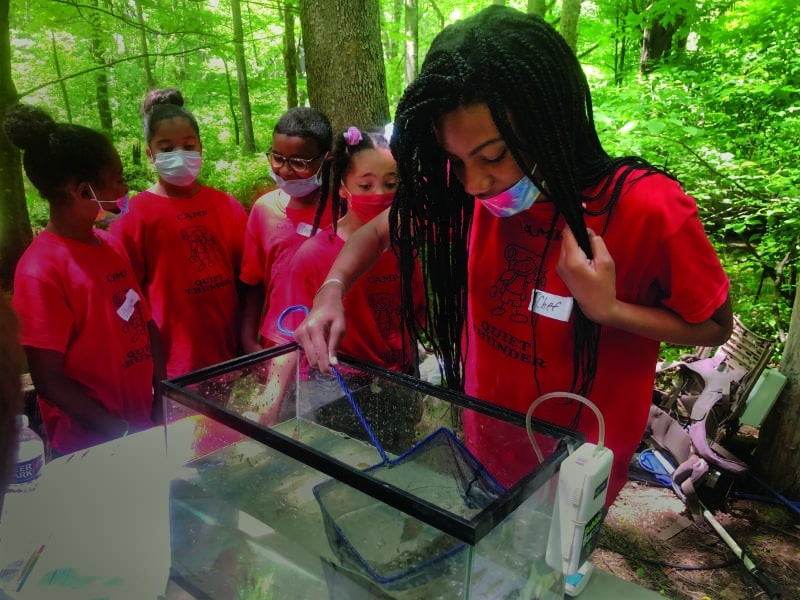
Today, the department provides more programs and connects with more individuals and diverse audiences than ever before. As it has grown and adapted, one thing has remained the same: the Stroud Center’s education efforts are rooted in its cutting-edge science.
The Stroud Center supports the United Nations Sustainable Development Goals (SDGs).
For more information, visit the UN website.
Connecting Learners to the Latest Research (SDG 4: Quality Education)
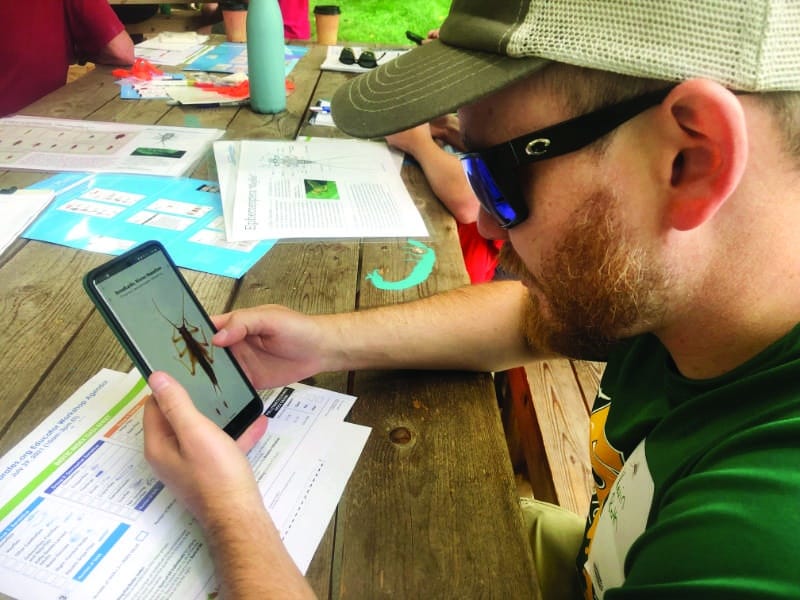
Education Director Steve Kerlin, Ph.D., says the Stroud Center’s research into watershed restoration has yielded discoveries about how wide a streamside forest should be and how to increase the survivorship of newly planted trees. “The Education Department shares this knowledge through activities like real-life habitat assessments and tree monitoring, and we help learners explore the value of trees in protecting fresh water through tools like Macroinvertebrates.org and resources like our field notebooks.”
The Education Department conducts its own research that is then used to inform Stroud Center education programs, as well as curriculum development for and recommendations to schools, teachers, and the authors of academic standards. In one case study last year, Kerlin and Adjunct Education Researcher Nanette Marcum-Dietrich, Ph.D., investigated the effects of outdoor learning on students and teachers during the coronavirus pandemic. They found that students and teachers responded favorably, reporting greater enjoyment, creativity, and collaboration, as well as better behavior and mood. In turn, the researchers were able to make recommendations for permanently established outdoor classrooms, well-defined expectations, and professional development to connect STEM learning to the outdoors.
Discovering Joy and Lessons From Nature (SDG 3: Good Health and Well-Being)
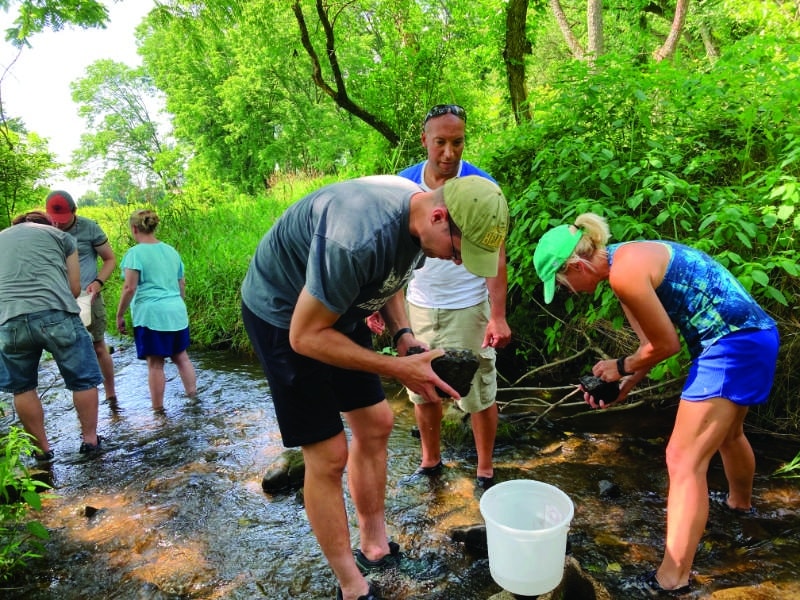
Bringing people outdoors and into streams and rivers has been a cornerstone of the Stroud Center’s education programs since the first leaf pack projects, which can be used to assess the health of a stream based on the bugs living there. Interactive, immersive, sensory experiences that require real-world critical thinking — what educators like to call hands-on, minds-on learning — include the Stroud Center’s boots-in-the-water stream studies and on-the-water trips like canoeing and fishing. Newer ones include stream-to-screen virtual programs, which integrate digital and outdoor learning.
“We want learners to have fun while gaining a better understanding of their local watersheds. And if it’s fun and meaningful, they are more likely to show interest in STEM careers,” Kerlin says.
Bridging Barriers to Equitable Education (SDG 5: Gender Equality & SDG 10: Reduced Inequities)
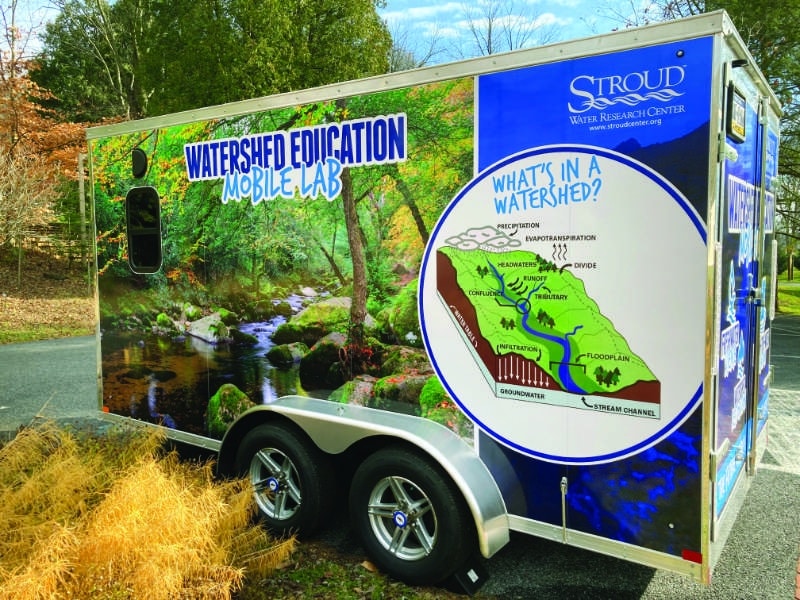
The Education Department is turning challenges — the creation of distance and separation to mitigate COVID-19, as well as unequal access to meaningful environmental education in underserved communities — into opportunities for action. “We meet learners where they are,” says Kerlin. The underserved include marginalized communities of color; socioeconomically disadvantaged populations; women and girls; English language learners; and other communities disproportionately harmed by environmental injustice.
That means helping people learn about the health of their local watersheds in their own homes through virtual learning programs, at their own schools through on-site programs, and in their own communities via community science and the Stroud Center’s new Watershed Education Mobile Lab.
It also means adopting educational best practices and accessibility standards that meet the needs of learners and help them to understand the value of freshwater science and stewardship in their own lives.
Inspiring Today’s Learners to Become Tomorrow’s Leaders (SDG 6: Clean Water and Sanitation & SDG 13: Climate Action)
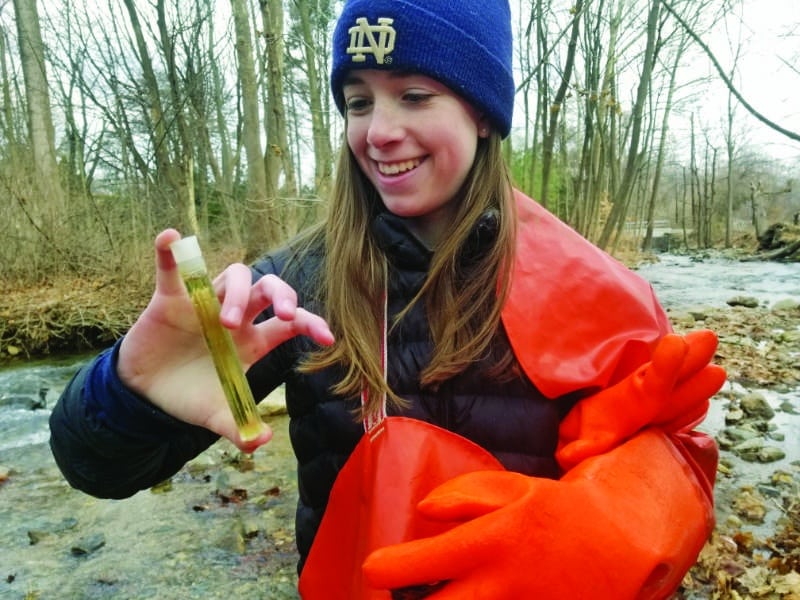
“The Stroud Center taught me that even though I am still a young student, I can be an advocate for our streams and make a huge beneficial difference in my community,” says Maggie Auman, who worked with Assistant Director of Education Tara Muenz, Watershed Education Specialist Mandy Nix, and Watershed Restoration Coordinator Lamonte Garber on a leaf pack project. For the project, Auman placed packs of dried leaves in streams to collect aquatic insects that she then used to assess stream health. Her project won first place in her local science fair. What Auman and others like her learn through the educational opportunities at the Stroud Center provides the knowledge and motivation to take action on some of today’s most pressing issues, including climate change and threats to clean water and its availability for all.
Last year, despite ongoing challenges posed by the coronavirus pandemic, the current staff of 18 full- and part-time educators taught more than 14,000 people throughout the world about freshwater science and stewardship, made possible in part by stream-to-screen virtual programs. Learners included students in kindergarten through graduate school, Scouts, families, community groups, school administrators, teachers, and nonformal educators. And when looking at the Stroud Center’s online educational resources and other connections, the indirect impacts total more than 153,000 in 2021.
Looking to the future, Kerlin says, “We are seeing education changing to a blended-learning approach, which combines online use of educational technology resources such as videos and digital field notebooks with in-person school and field-based hands-on learning activities. By embracing this approach, the Education Department is already creating deeper understandings of watershed science and expanding our reach to new audiences.”
Get Involved
On-site and off-site school and Scout programs for youth, professional development workshops for adults, and family programs in virtual, remote, and in-person settings are just some of our available education options. Visit our education page for more information.



